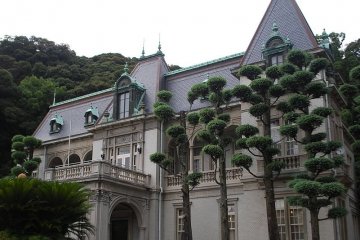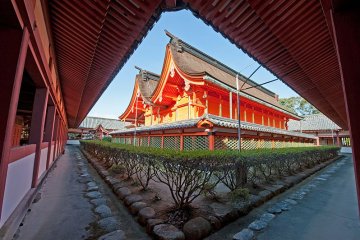
Bar Stand 「空海(KuKai)」
Kazumi Shigematsu【Bar stand 「空海(KuKai)」】是位于爱媛县松山市的城北,爱媛大学和松山大学的城北校园附近的店。我们最强力推荐的是的Wrap sandwich(卷饼),一般标准大小是S寸180日元一个,有一只手大哦;双手大小M寸也只要250日元起~

Matsuyama Castle is one of the twelve "original castles" in Japan, i.e. castles that have survived the post-feudal era since 1868 unscathed. It is located on the 132 meter high Katsuyama Mountain, which offers visitors a great view of Matsuyama and the Seto Inland Sea. With around 200 cherry trees on the castle grounds, Matsuyama Castle is a popular destination, especially when the cherry blossoms are in bloom.
The castle was built between 1602 and 1628 and assigned to a branch of the Matsudaira family in 1635. It is an excellent example of a feudal castle. The Honmaru is located on the top of the hill and is accessible through several well-defended gates. The main tower is one of the few in the country that has multiple wings. The complex also includes a secondary keep and several towers. Inside the castle, some exhibits provide information about the history of Matsuyama and the feudal era.

【Bar stand 「空海(KuKai)」】是位于爱媛县松山市的城北,爱媛大学和松山大学的城北校园附近的店。我们最强力推荐的是的Wrap sandwich(卷饼),一般标准大小是S寸180日元一个,有一只手大哦;双手大小M寸也只要250日元起~

Most might not expect to find a French-style villa below Matsuyama Castle, but this elegant construction offers a respite from the bustling town center of Ehime. Bansuiso, largely hidden by trees and modern buildings, was originally the second Residence of Count Hisamatsu Sadakoto, a descendant of the Matsuyama samurai clan and former lord of the neighboring castle. After living in France and returning with his love of Neo-Renaissance architecture, he commissioned the construction of the villa. Completed in 1922, it was the scene of numerous elite parties and social gatherings, and even welcomed members of the imperial family as guests, including Showa Emperor Hirohito. Bansuiso serves as both a place of art and culture and a sight. The first floor and the basement are freely accessible and for ¥ 300 visitors can climb a wooden staircase to take advantage of more photo opportunities. Although the villa hosts solo exhibitions, it also has its own murals and portraits, including the portrait of the first owner.

The Botchan Railway Museum is designed as a museum for everyone. It tells the story of the Iyotetsu Railway, which has been available to the citizens of Matsuyama since it was founded in 1887. The exhibitions are entertaining even if you are not a huge railway fan yourself. A replica of the Iyotetsu No. 1 locomotive gives an insight into the scenery from the Meiji period. However, there are also individual railway sections and tracks from every era, a diorama of the old cityscape of Matsuyama and a selection of historical photos, so that the visitor can feel like on a journey through time.

Thought to be at least 1,000 years old, Isaniwa is one of Japan’s three shrines dedicated to the deity Hachiman. After climbing a long stretch of stone stairs, passing a double-story gate, a magnificent bright-red structure emerges. The architectural details are especially grand with the building’s swooping tile roofs, gold-leaf columns and ornate, cloudlike beam engravings. In addition to the spectacular architecture, there are displayed paintings of warriors and warfare (as Hachiman is the guardian of warriors and protector of Japan) and even numerous documents on Japanese mathematics. A hall of treasures features swords and armor for samurai history buffs. Other relics include animal paintings and calligraphy. Supposedly, Isaniwa Shrine originally marked the location where Emperor Chuai and Empress Jingu, who reigned in the third century AD, bathed at one of Japan’s oldest bathhouses, Dogo Onsen, now just a few hundred meters away. The shrine was moved to by the Kono samurai clan in the fourteenth century to the current location where, after conquering the stairs, you can enjoy breathtaking views of Matsuyama city. It was rebuilt in the 17th century by the Matsudaira clan; the current buildings with their great vermilion surface date from 1667. The original imperial bathers are enshrined there. Despite its age, the shrine is still buzzing with worshippers and even couples celebrating or taking pictures for their wedding. Although visitors note that the stairs are a little treacherous, the views and tranquil atmosphere only add to the experience of walking around the colonnade and absorbing a rich and long history—and if you’re lucky, observing a modern-day ceremony. If the trip does tire you out, you can always relax at Dogo Onsen at the foot of the compound.